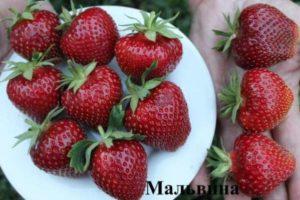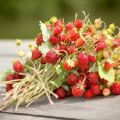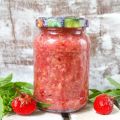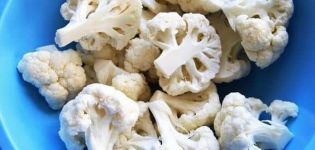Description and subtleties of growing strawberries of the Ruyan variety
Ruyan strawberries are loved by many summer residents. Alpine berry appeared in Russia only in the 90s, but instantly took root. Grown throughout the country, even in the northern regions. Fresh strawberries are different from both garden strawberries and strawberries. It has a specific taste and aroma that cannot be confused with any others.
History of creation
Ruyanu began to be bred in the 70s of the last century, but the work was crowned with success only in 1989. The variety is of Czech origin, it turned out due to the crossing of wild alpine strawberries and strawberries that grow in cultivated soils.
This variety was included in the register in Russia only in 1997. However, the document does not indicate the regions of admission. Strawberries grow well not only in the southern and middle lane, but are also not afraid of frost in the north.
Description and characteristics of Ruyan's strawberry
Before purchasing seedlings, study the description of the variety.
Appearance
The bushes are medium in size. They bear fruit all season, the harvest can be removed at any time. The height of the bushes reaches 20 centimeters, but usually does not exceed 16 centimeters. It is distributed in a hemispherical, standard form. Medium density, but mature plants can be quite dense.
Ruyan's strawberry propagates with the help of seeds. But also summer residents can take seedlings and plant them in a direct way in the garden. It is better to collect seedlings in the initial period of the season.
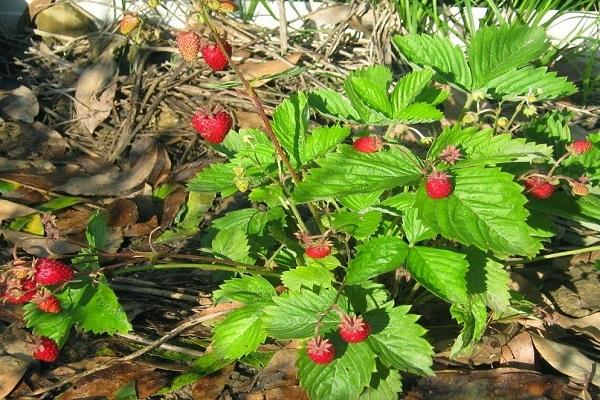
Ruyan's strawberry leaves have a light green color, quite bright, noticeable. In their shape, they are closer to convex, the bubbles are weakly expressed. There is some sheen, but usually fades by mid-season. This strawberry variety does not have antennae - this is a characteristic feature. Inflorescences are also perfectly visible - they are higher than the leaves. Inflorescences reach a length of 25 centimeters. The flowers themselves are quite small, their size does not exceed half a centimeter.
Fruiting time, yield
Flowering begins already on the May holidays, while it is quite strong. Ends in July-August - this parameter depends on the specific region of growth and is set by summer residents on an individual basis. The first crop is harvested in mid-June. It bears fruit all year round, until the first frost the strawberry bears fruit stably. The strawberry yield per square meter is up to two and a half kilograms. The berries are dense, they are resistant to transportation.

The berries are small, they do not exceed 7 grams in weight. The shape is closer to conical, but not flattened, a tendency to stretch. The berries are quite proportional, while all are identical in weight. The color is deep pink, there is a gloss of medium intensity. The pulp is the same color, but there is a reddish tone in the center and at the edges. There are no hollow areas inside, as is the case with some strawberry varieties. Simply remove the pulp from the cup.
Ruyan's strawberries taste identical to strawberries; it is impossible to distinguish them without looking at their appearance.
Application area
Ruyana is used for various purposes. It is also eaten fresh, mixed with sour cream or sugar. Also, very tasty preserves and jams are made from Ruyana. They also make rich wine from it, however, it should be understood that there is little sugar in the berry, so you need to add it to sweeter products.
The berry has a high density, so it can be transported over any distance. Strawberries are planted in one region, and used in another - there are no problems with this.
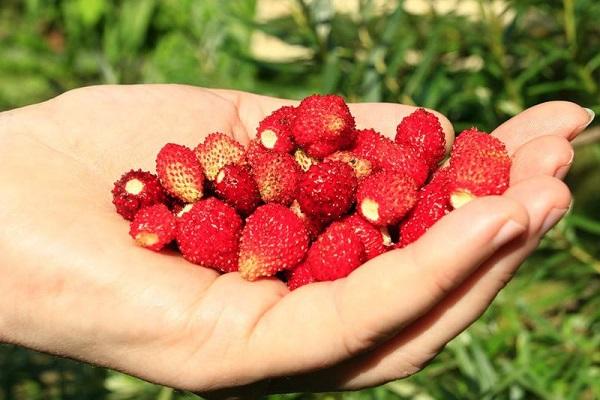
Disease and pest resistance
The plant is affected by nematodes, spider mites, weevils and leaf beetles. Verticillary wilting and gray rot are also possible.
Advantages and disadvantages of the variety
Among the advantages of growing strawberries of the Ruyan variety are:
- tasty, rich, aromatic berries;
- long term for harvesting, up to the very cold;
- there are no antennae that interfere with harvesting;
- since the peduncles are tall, ripe berries do not get dirty on the soil;
- high density of berries allows them to be stored for a long time;
- strawberries are not affected by the fungus;
- wintering without shelter is possible if the plant is 3-4 years old;
- the plant is not afraid of high temperatures, long periods of time without watering.
The disadvantages of Ruyana strawberries include the fact that special soil is required. It grows on light soil. Although it tolerates heat, it produces smaller berries without moisture. It grows up to 4 years, then it is updated.
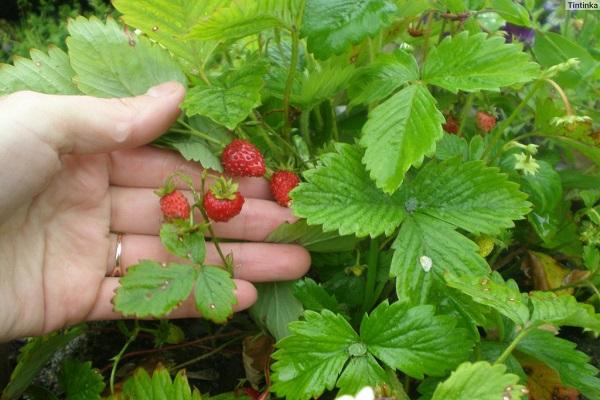
The nuances of growing a crop
Before disembarking, they get acquainted with the rules of agricultural technology.
How to choose seedlings
The seedling is chosen with bright green foliage, without visible damage, traces of rot. A minimum of three is taken, the thickness of the row is from 7 millimeters. If the seedling is sold in containers, then pay attention to the root system. The length of the roots should be at least 7-8 centimeters.
Site selection and soil preparation
The place is chosen on the sunny side, without darkening (but a small one from tall trees is allowed). Sand and compost are added to the soil during planting. If acidity is exceeded, then add chalk and ash.

Landing scheme
Planted in rows, distance up to 20 centimeters. It can be placed near other plants, since such strawberries do not have antennae.
Care advice
Proper care will ensure a high yield.
Watering and mulching
It is recommended to water once a day during dry periods, especially during the formation of the ovary. The best time is before sunset. Mulch with sawdust or straw.

Top dressing
Top dressing is applied from the second year of life. Be sure to do:
- top dressing with ammonium nitrate in early spring;
- nitroammophos during the formation of buds;
- with nitroammophos and potassium sulfate after the ovary.
Flowering, pollination and frost protection
Flowering and pollination do not require additional actions from the summer resident. They are covered with agrofibre from frost.

Protection against diseases and pests
Ruyan's strawberry variety is quite resistant to pests. But during an epidemic, symptoms appear.
The most well-known type of disease that attacks strawberries is verticillary wilting.Alas, the disease is incurable, it manifests itself in the fact that the bushes simply begin to fade and die. You can prevent an epidemic if you dig up a plant with a large layer of soil and burn it. In place of a wilted plant, no others should be planted for at least 12 months. After that, the land should be fed.

Strawberries are often affected by gray rot. It manifests itself noticeably: on the berries there are gray spots with a bloom, while they have an unpleasant putrid smell. You can cope with this using special tools.
Prevention - remove the affected berries.
Pests also attack strawberries. In this case, you can distinguish them by the following features:
- nematode - ugly leaves, an increase in the thickness of the peduncle;
- spider mite - slow growth, the appearance of a pest, drying out of bushes;
- weevil - not bud formation;
- leaf beetle - dropping leaves, damage to them.
Quite often, ordinary slugs and snails also harm strawberries. You can deal with them at home, for example, using red peppers or nettles.

Breeding methods
The plant reproduces:
- dividing the bush;
- growing from seeds.
The second option is acceptable for a summer residence, as it minimizes the risk of failure.
Harvesting and storage
Harvested from mid-July until frost. They are stored for a long time, since the fruits are dense.

Features of growing in pots
Algorithm for growing in pots:
- seed stratification;
- sowing (in peat tablets);
- immersion in the soil;
- picking.
Any pot will do. In winter, lighting is needed. Pollination is carried out with a brush.
It's easy to grow Ruyan's strawberries. But in order for the plant to please with tasty and large fruits, it is important to properly organize its care.
